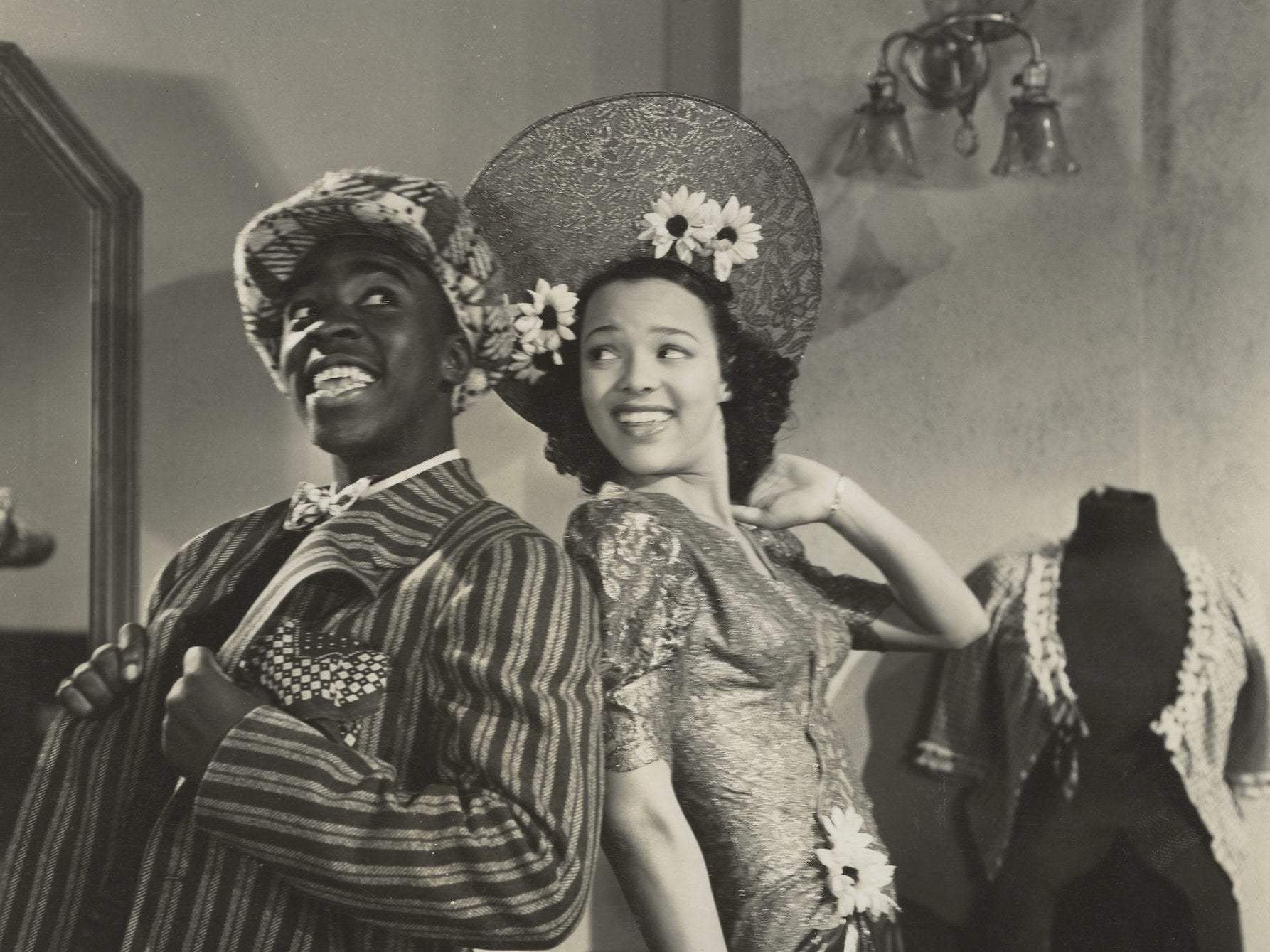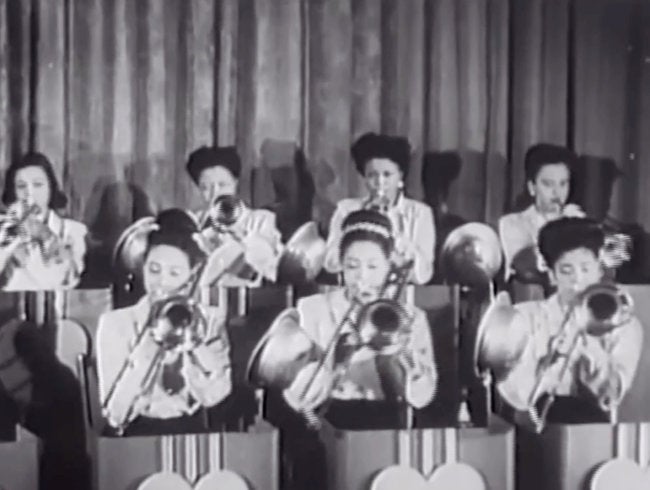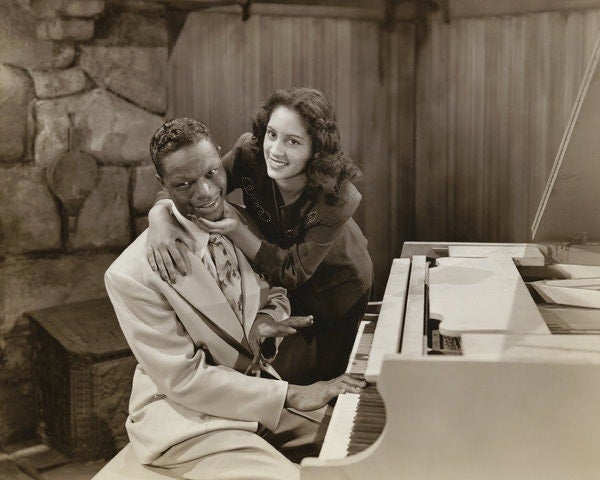‘A showcase for black talent’: How the spirit and charm of Soundies offer a bittersweet vision of 1940’s America
The short musical films were another symbol of segregation, but also preserved the flair of Duke Ellington, Dorothy Dandridge and Nat King Cole, writes Manohla Dargis

Your support helps us to tell the story
From reproductive rights to climate change to Big Tech, The Independent is on the ground when the story is developing. Whether it's investigating the financials of Elon Musk's pro-Trump PAC or producing our latest documentary, 'The A Word', which shines a light on the American women fighting for reproductive rights, we know how important it is to parse out the facts from the messaging.
At such a critical moment in US history, we need reporters on the ground. Your donation allows us to keep sending journalists to speak to both sides of the story.
The Independent is trusted by Americans across the entire political spectrum. And unlike many other quality news outlets, we choose not to lock Americans out of our reporting and analysis with paywalls. We believe quality journalism should be available to everyone, paid for by those who can afford it.
Your support makes all the difference.Hair slicked and smile set to dazzle, Duke Ellington is standing at an upright piano when Hot Chocolate opens, conducting a band that’s already swinging. A decorative musical staff provides the only ornamentation on the otherwise bare-bones, cramped set. That scarcely matters because Ellington is playing. He calls out Ben Webster’s name, and there’s a cut to the saxophonist. A few more cuts take us to two women who smile and nod, then Whitey’s Lindy Hoppers begin jumping, rocketing the film into the stratosphere.
Hot Chocolate was among the more than 1,800 short films called Soundies that Ellington and hundreds of other entertainers made in the 1940s. The films were commissioned by the Soundies Distributing Company of America, part of the Mills Novelty Company, which made the large cabinets – Panorams – that played them. Each had a 16-mm projector inside, a glass screen on the exterior and looked like a supersized early TV set. Viewers had to watch eight films on a loop, but today you can pick what you like among the hundreds that are free on YouTube. Many are in very rough shape, so watch them on a small screen where the visual degradation is less apparent. At around three minutes, they are perfect for short attention spans.
As a showcase for black talent, Soundies also offer a bittersweet vision of an American movie mainstream that could have been. Produced during Jim Crow, the Soundies were as segregated as the rest of the country. The catalogue listed black artists in a separate section, apparently for the convenience of the segregated joints that played them. Most of the Soundies I’ve watched feature either all-white or all-black casts; a few showcase Latinos, but there are next to no Asians. (Ricardo Montalban appeared in Soundies, including He’s a Latin from Staten Island, which, alas, I have yet to locate.) One of the few integrated Soundies I’ve seen is Let Me Off Uptown, with jazz greats Gene Krupa, Roy Eldridge and Anita O’Day cooking with gas.
Some are amusingly racy when compared with the uptight Hollywood fare of the period, which explains all the bobbing breasts, crossing-uncrossing female legs
Soundies were largely produced and directed by white filmmakers, but one of their most important contributors was Fritz Pollard, the pioneering black Amercian football player turned booking agent, entrepreneur and future Hall of Famer. (He also worked on the Paul Robeson film The Emperor Jones.) In 1942, Pollard signed with Mills, becoming the manager for the Soundies’ New York office. According to Pollard biographer John Carroll, musicians rehearsed their numbers at Pollard’s Suntan Studios in Harlem and shot the acts in a Bronx studio. However contrived and impoverished their means, these films are a crucial part of African American cinema history.
From 1941 to ’46, Soundies could be played on Panorams – or movie jukeboxes, as they’re often called – across the country in bars, pool halls and restaurants. Movies have always tried to get out of the (cinema) house, and one of the fascinating things about Panorams is that they allowed users to control their viewing experience. Soldiers, barflies and folks waiting for the next train could slip a dime in a Panoram and summon up Louis Armstrong and Spike Jones and future Hollywood stars like Doris Day and Dorothy Dandridge, who made my favourite Soundie, the delightful A Zoot Suit. Most of the great entertainers in Soundies played jazz, but there are films with the blues, cowboy tunes, Hawaiian melodies, polka music, rumbas, the works.

Soundies are often referred to as music video prototypes, which is true but doesn’t fully capture their hybrid charm and how they fuse vaudeville, theatre, cinema and the era’s newest novelty, television. The films were made on the cheap, sometimes in just one day, with the sound recorded first and performers miming the music during production. Often, the featured attraction performs in the middle of the frame while looking directly at the camera, as if on a stage. She – most often he – performs with other musicians, dancers or both, and sometimes for a tiny audience. The acts sometimes appear on a stage with a curtain, as if in a theatre; at other times they look as if they’re jamming in a basement storeroom.
Like some other movies produced outside the studio system, Soundies wiggled around tight censorship rules. Some are amusingly racy when compared with the uptight Hollywood fare of the period, which explains all the bobbing breasts, crossing-uncrossing female legs and even some teasing peekaboo from burlesque stars like fan dancer Sally Rand. Women extras were often used to dress up the blah sets, to smile and nod and add sex appeal. If the Soundies were a guy, I’d call him a leg man, though sometimes the eye drifts elsewhere. In the otherwise insipid Oh! Please Tell Me Darling, future noir goddess Gloria Grahame steals the show by fidgeting with her neckline while feigning interest in singer Red Maddock.
Soundies (and their assorted competitors) offered a challenge to the theatrical experience, so it’s no surprise that exhibitors viewed them with alarm. In their invaluable guide The Soundies Book, Scott MacGillivray and Ted Okuda explain that exhibitors were furious that the Mills Novelty Company had millions of dollars in orders before the first Soundie was shot. The company had grand ambitions: At one point it announced that it planned to manufacture 100,000 Panorams, but it ended up placing only about 5,000 machines across the country. Wartime restrictions on the materials used to manufacture Panorams put a dent in the business, as did a musicians strike, but it was television that really killed them off.
Still, Soundies lived on, including in packaged reels sold for the home market. They are ripe for film preservation and for wider love from the public. That’s especially true because they were such a fantastic showcase for black talent, including women of different sizes and complexions whom Hollywood ignored or degraded and whose legacies are often memorialised only on jazz websites. It’s because of Soundies that I discovered Una Mae Carlisle, a protegee of Fats Waller of black and Native American heritage. In ’Taint Yours, she performs for a sharp looker leaning on her piano; in I'm a Good Good Woman, she plays for five appreciative men doing the same.

I can’t get enough of the Soundies that feature the mind-blowing International Sweethearts of Rhythm. This acclaimed, predominantly black, all-women band appeared in several Soundies that were culled from That Man of Mine (1946), a musical with the young Ruby Dee. The Soundies feature glamorous bandleader Anna Mae Winburn, who swings and sings amid gown changes. For one song, she steps aside, and trumpeter Tiny Davis (whom Louis Armstrong admired) takes centre stage, singing with bluesy oomph – “You’ve got the key to my door if you know how to turn it right” – before taking her horn and blowing the roof right off.
© The New York Times
Join our commenting forum
Join thought-provoking conversations, follow other Independent readers and see their replies
Comments